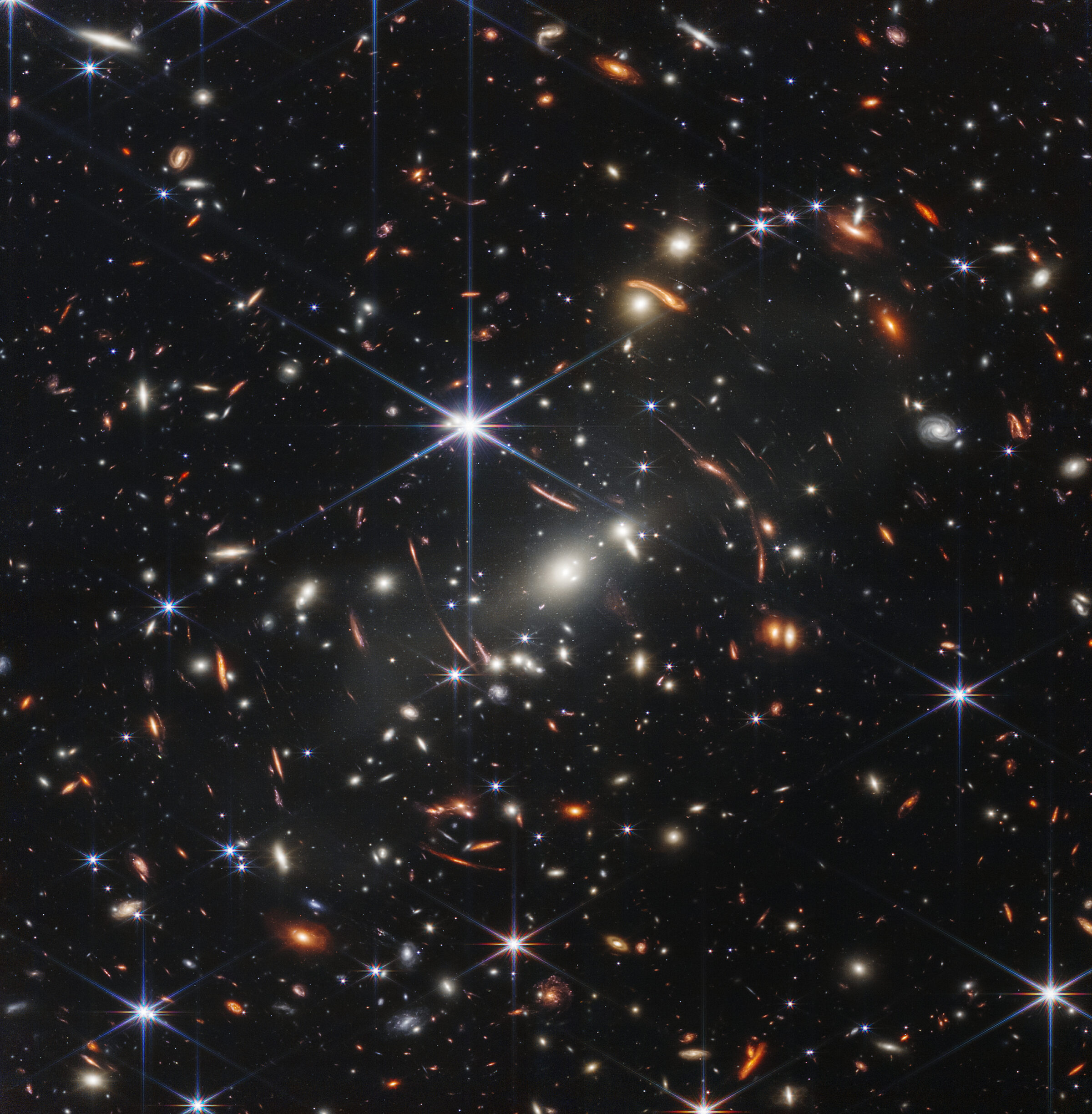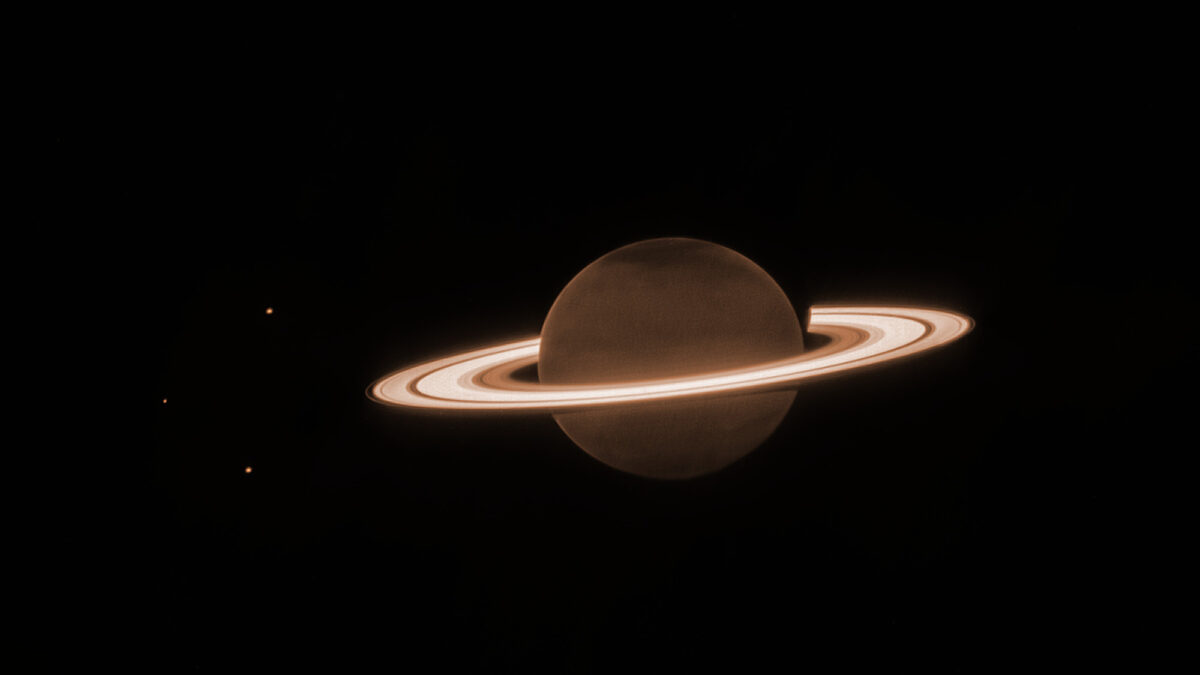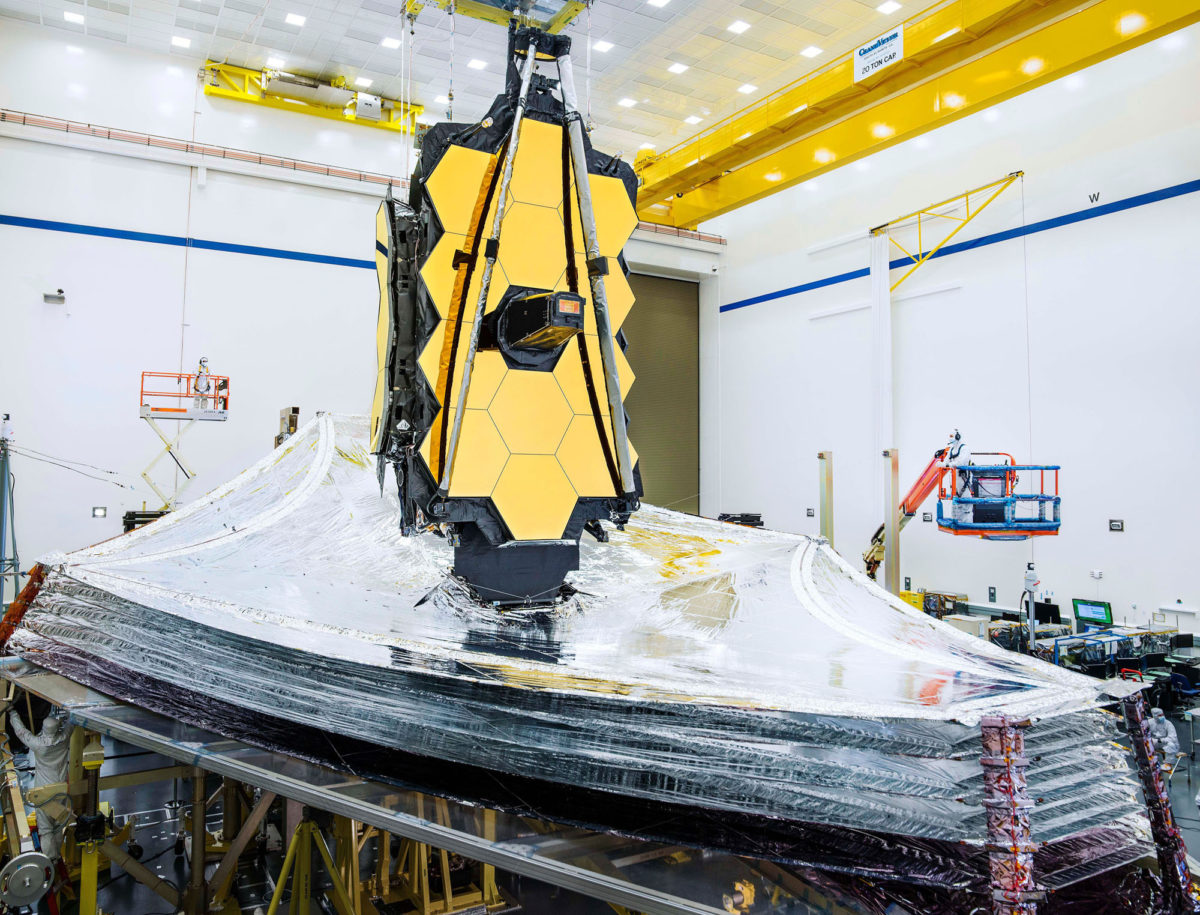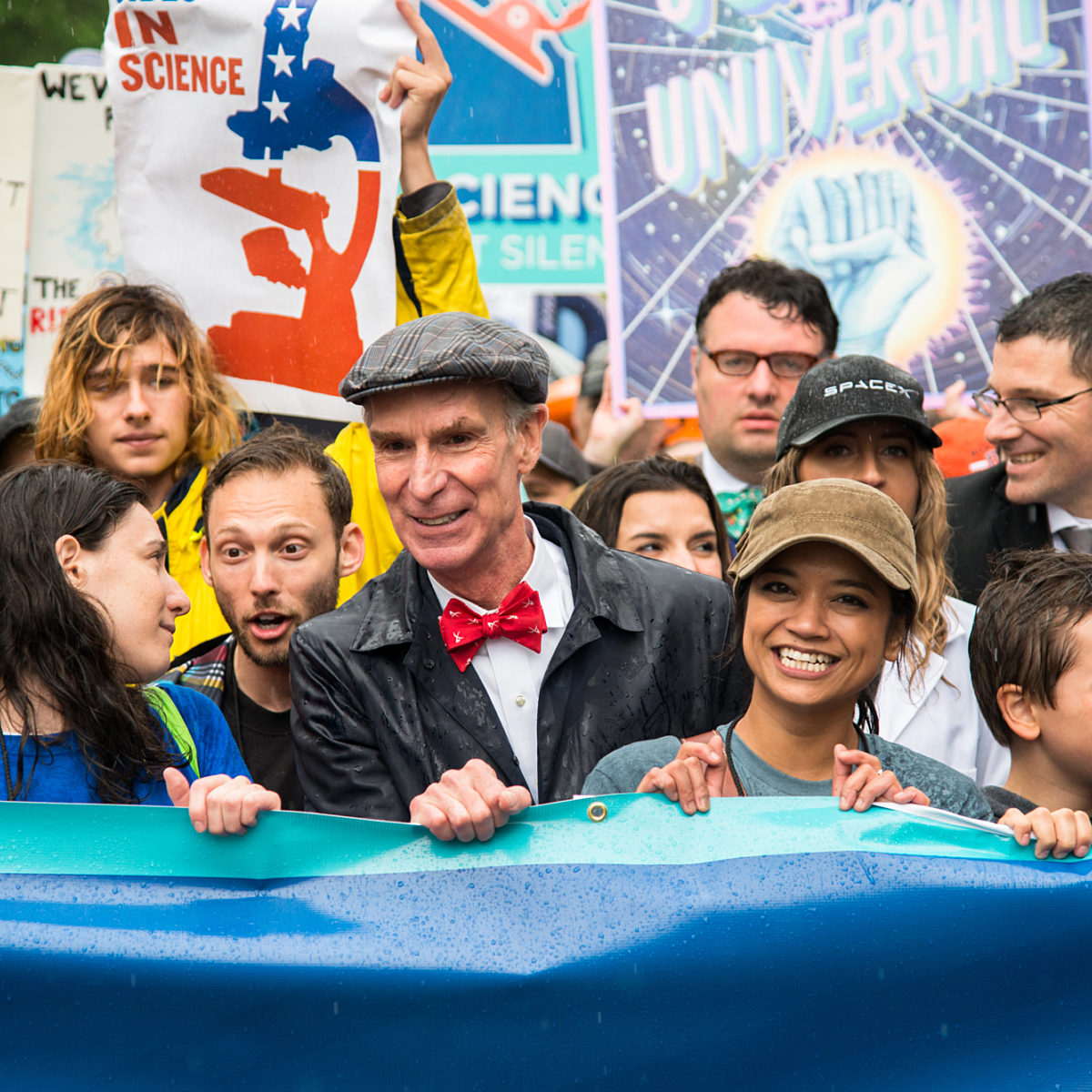James Webb Space Telescope, the world's new great space observatory
Highlights
- NASA’s James Webb Space Telescope, JWST, is a multipurpose observatory launched in December 2021.
- JWST is helping us understand of the Cosmos, study whether other planets could support life, and learn about the early history of galaxies.
- Like Hubble, JWST is expected to revolutionize our view of the Universe.
Why We Need JWST
Science is all about standing on the shoulders of giants, and that’s certainly the case for JWST. The observatory builds upon three decades of discoveries by the Hubble Space Telescope, which launched in 1990 and has revolutionized our understanding of the cosmos.
Earth’s atmosphere distorts our view of distant celestial objects and blocks certain wavelengths of light, including slices of infrared that human eyes cannot see. Infrared-capable space telescopes can determine the atmospheric composition of planets orbiting other stars, look through clouds of dust and gas to see newborn stars, and even peer back through time to see galaxies that formed right after the Big Bang.
JWST is able to see a much larger portion of the infrared spectrum than Hubble, and collects six times more light. It complements and extends Hubble’s observations, becoming the world’s newest premiere space observatory.
So far, we know of more than 5,000 exoplanets — planets orbiting stars. Do any of these worlds host life as we know it? JWST is taking us another step closer to finding out. One of the ways we study exoplanets is by watching them pass in front of their host stars, which creates a small dip in the amount of starlight we see from Earth. Not only does the amount of light change, the type changes too, due to interactions between the starlight and exoplanet’s atmosphere.
These changes show up particularly well in the infrared, which is exactly the kind of light JWST is equipped to see. What are we looking for? Life on other worlds may be more exotic than anything we’ve ever imagined, but it makes sense to start by looking for worlds like our own. An Earth-like planet would have an atmosphere made primarily of nitrogen and oxygen, with trace amounts of gases associated with life like methane and ozone. An early target for JWST has been TRAPPIST-1, a star system 40 light-years away that contains multiple planets in the habitable zone, the not-too-hot, not-too-cold region around a star where liquid water can exist on a planet’s surface.
JWST is an international observatory. In addition to providing the Ariane 5 rocket, the European Space Agency contributed to two of JWST’s four science instruments. The Canadian Space Agency also provided one instrument.

How much does JWST cost?
JWST is expected to cost NASA $9.7 billion over 24 years. Of that amount, $8.8 billion was spent on spacecraft development between 2003 and 2021; $861 million is planned to support five years of operations. Adjusted for inflation to 2020 dollars, the lifetime cost to NASA will be approximately $10.8 billion.
The Planetary Society has additional context to help you understand these numbers. JWST was originally estimated to cost $4.96 billion and launch in 2014. But serious mismanagement and under-resourcing during critical early planning stages caused the ambitious spacecraft to fall behind schedule. After NASA restructured the project to launch in 2018 the total cost increased to $8.8 billion. In the intervening years, the program struggled to address serious technical problems, further delaying the launch to 2021. This final delay added yet another billion dollars to the total cost.

What’s in a name?
The James Webb Space Telescope is named after James Webb, who served as NASA’s second administrator from 1961 to 1968. More than 1,700 space scientists and enthusiasts — including people who have applied for observing time on the telescope — have asked NASA to change the name. They point to archival evidence showing that while serving as undersecretary of state prior to his tenure at NASA, Webb participated in discussions regarding the “lavender scare,” an effort to purge queer people from government service. In 1963, while Webb was administrator, a NASA employee in Washington, D.C. was arrested, interrogated and fired for making a "homosexual advance." In September 2021, NASA announced that a historical review found no evidence that warranted changing the telescope's name.
How JWST Works
Before JWST could do its job, it first had to get to space. The telescope launched aboard Europe’s Ariane 5 rocket, which has a payload fairing, or nose cone, 5.4 meters across — one of the world’s biggest. That still was not wide enough for JWST’s 6.5-meter mirror, which consists of 18 hexagonal segments arranged like a honeycomb. Three segments on each side folded back for launch so the telescope could fit.
Other parts of JWST were packed up for launch, too, making it a contortionist spacecraft. The three struts that hold the telescope’s secondary mirror folded together. The tennis-court-size sunshade folded and rolled into a tight bundle that relied on a multi-step process for unpacking. Other deployable components included the telescope’s solar panels, an antenna, and radiators that shunt extra heat into space.
JWST Deployment Sequence Before JWST can do its job, it must first get to space and execute one of the most complex deployment sequences ever attempted. Credit: NASA's Goddard Space Flight Center
In order to see infrared light, JWST must block out heat from both the Sun and its own instruments. The first line of defense is a five-layer sunshield, which will keep the telescope chilled to -233 degrees Celsius (-388 degrees Fahrenheit). At a glance, JWST’s sunshield looks a little like the solar sail aboard The Planetary Society’s LightSail spacecraft. Although JWST’s sunshield isn’t used for propulsion, the Sun’s rays still give it a push, so the spacecraft has a reflective trim tab that deploys at a different angle to help offset the forces of solar radiation.
But even a sunshield's not enough: JWST also needs to block out light from Earth and the Moon, which is difficult in Earth orbit. JWST is located at a special spot called L2, 1.5 million kilometers (932,000 miles) away. There, the Sun and Earth’s gravity balance out in a way that allows JWST to permanently keep the Sun, Earth, and Moon at its back while it observes the cosmos.
Once JWST arrived at L2 with its instruments and equipment deployed, the fun began. Light from distant objects bounces off its hexagonal mirrors, which are coated with a thin layer of gold to help it see better in the infrared. The light travels up to a secondary mirror, which focuses it into a beam the size of a dinner plate, sending it back through a hole in the center of the primary mirror. From there, it is focused further and can be sent through 4 different science instruments.
The farther away objects are, the longer it takes their light to reach us, meaning when we look at a distant galaxy, we are actually seeing what that galaxy looked like in the past. When you look at the Moon, you are seeing it as it existed 1 second ago. The sunlight warming your face on a beautiful day is eight minutes old. The Andromeda Galaxy, which looks like a smudge of light through binoculars, is actually 2.5 million years older than it appears now.
JWST can see galaxies up to 13.4 billion years old, around just 400 million years younger than the Big Bang itself. Galaxies at this distance are quickly speeding away from us due to the expansion of the universe. This makes the wavelength of their light longer due to the Doppler effect — the same phenomenon that causes an ambulance siren to sound higher-pitched as it approaches you and lower-pitched after it passes you.
Long-wavelength light from objects formed even closer to the Big Bang is shifted deep into the infrared; in some cases beyond Hubble’s capabilities. JWST may be able to see objects as far back as 100 million years after the Big Bang, which will help us better understand our cosmic origin story.

Support missions like JWST
Whether it's advocating, teaching, inspiring, or learning, you can do something for space, right now. Let's get to work.
Acknowledgements: This page was initially written by Max King in 2020.


 Explore Worlds
Explore Worlds Find Life
Find Life Defend Earth
Defend Earth


